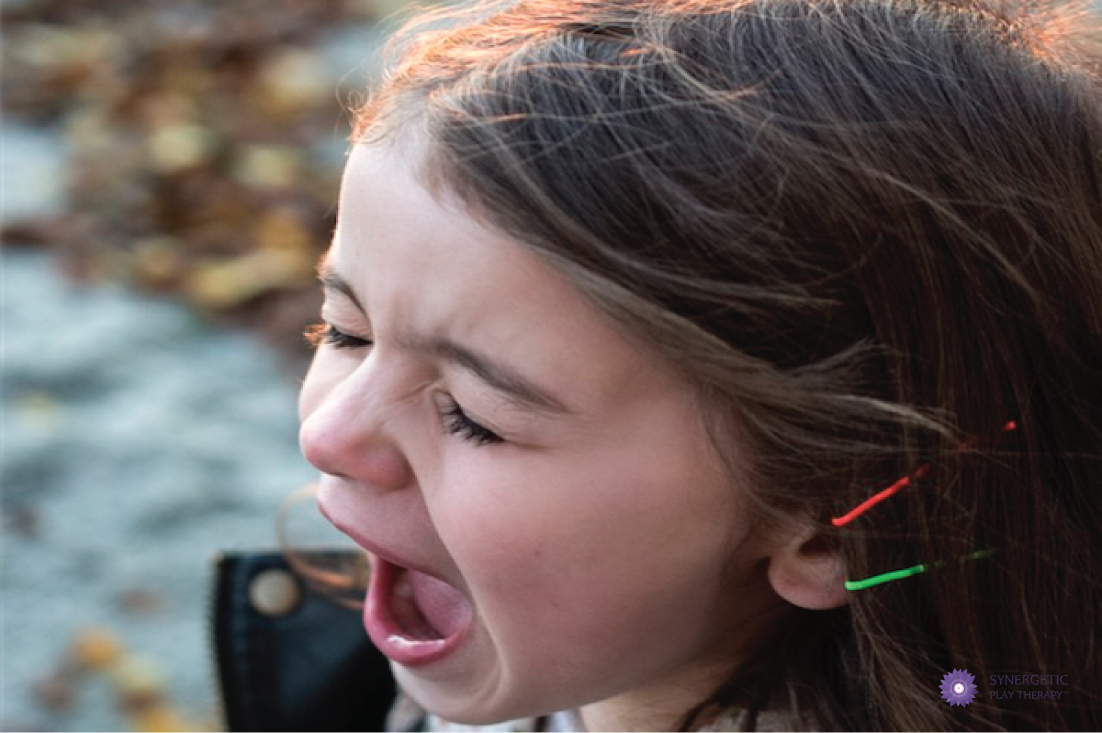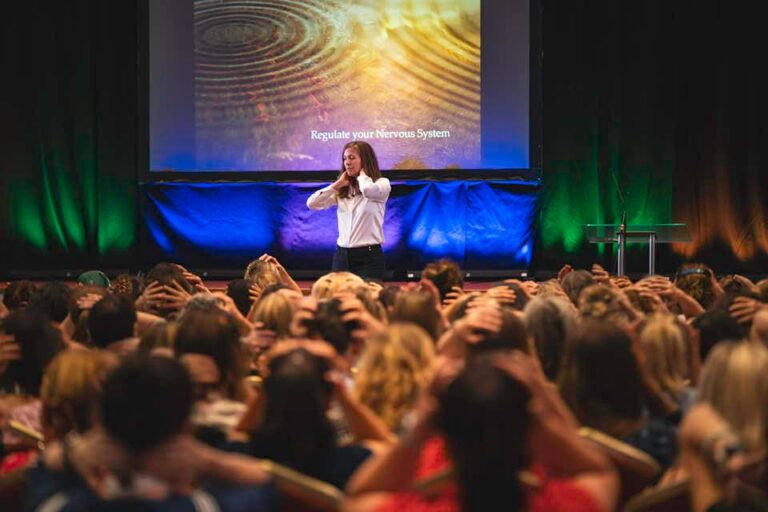In our culture, aggression tends to be viewed as a no-no. When a child starts to play aggressively in a session, we can get caught up in trying to decide if we should let it play out or stop it. Is this okay? Should I allow this? If we play like this, are they going to play like this with their friends? Am I promoting aggression? Should I be teaching social norms such as, “Hitting is not appropriate.” These are the questions I hear every time I teach a seminar on working with aggression. They speak to the confusion that often arises inside us. Without understanding what the aggression actually means or how to work with it, we often default to what we think is the right thing to do, which may not be the most therapeutic thing.
The playroom is the child’s safe and contained place for exploring his/her feelings, memories and body sensations. It’s the place where a child gets to do, say and move in ways that may not be acceptable outside the playroom. Having this understanding helps us consider the value of aggressive play. It leads us to ask ourselves, “Is this a social skills class or a therapy session?” If it is indeed a social skills class or the focus of the session is on teaching the child appropriate rules for interacting with others, a different approach toward the aggression might be appropriate. But if you’re doing one-on-one trauma work with a child, it’s absolutely necessary for the child to be able to explore his or her aggression because that’s how children can learn about it and ultimately learn how to regulate through it. The beautiful thing is that as we help our child clients explore their aggressive urges in ways that promote integration, we’re also teaching them how to be in relationship with others.
When we’re supporting a child in working through traumatic experiences, we have to be willing to let in any aspect of the trauma that needs to enter the room so that the child can work through it with our help. Some therapists worry that allowing the aggressive play inside the playroom might promote or intensify aggression elsewhere; the concern is that we might be giving the child permission to aggressively play with others.
Although this is a primary concern that I often hear from therapists, I believe there is another fear that is often unspoken. This is the fear of what aggressive play will do to the therapist. It is highly likely that at some point in your play therapy experience you have felt the effects of what aggressive play can do to your mind and your body. In response to the aggression (whether we are observing it or being asked to engage in the play itself), we naturally activate, because chances are that we will perceive some level of threat. And whether we like it or not, we will feel the effects of our own nervous system moving into a sympathetic (fight, flight or freeze) response.
The implications for this are profound, because if we do not learn how to work with the aggressive energy that needs to come into the playroom, we will be at risk for compassion fatigue and extended states of dysregulation in our own bodies. Over time, our lives will be impacted. If you have worked with high levels of trauma on your caseload, you know exactly what I am referring to.
The wonderful news is that there is a way to allow children to express themselves in the playroom and play through whatever parts of their experiences that they need to, even if there is aggression associated with it, without having our own nervous systems shut down. And it all starts with the ability to regulate ourselves in the midst of the intensity.
By Lisa Dion, LPC, RPT-S





